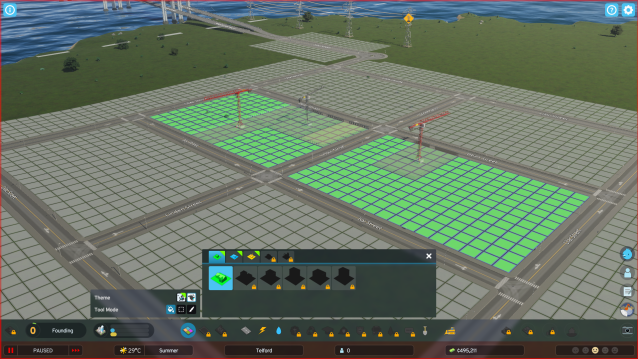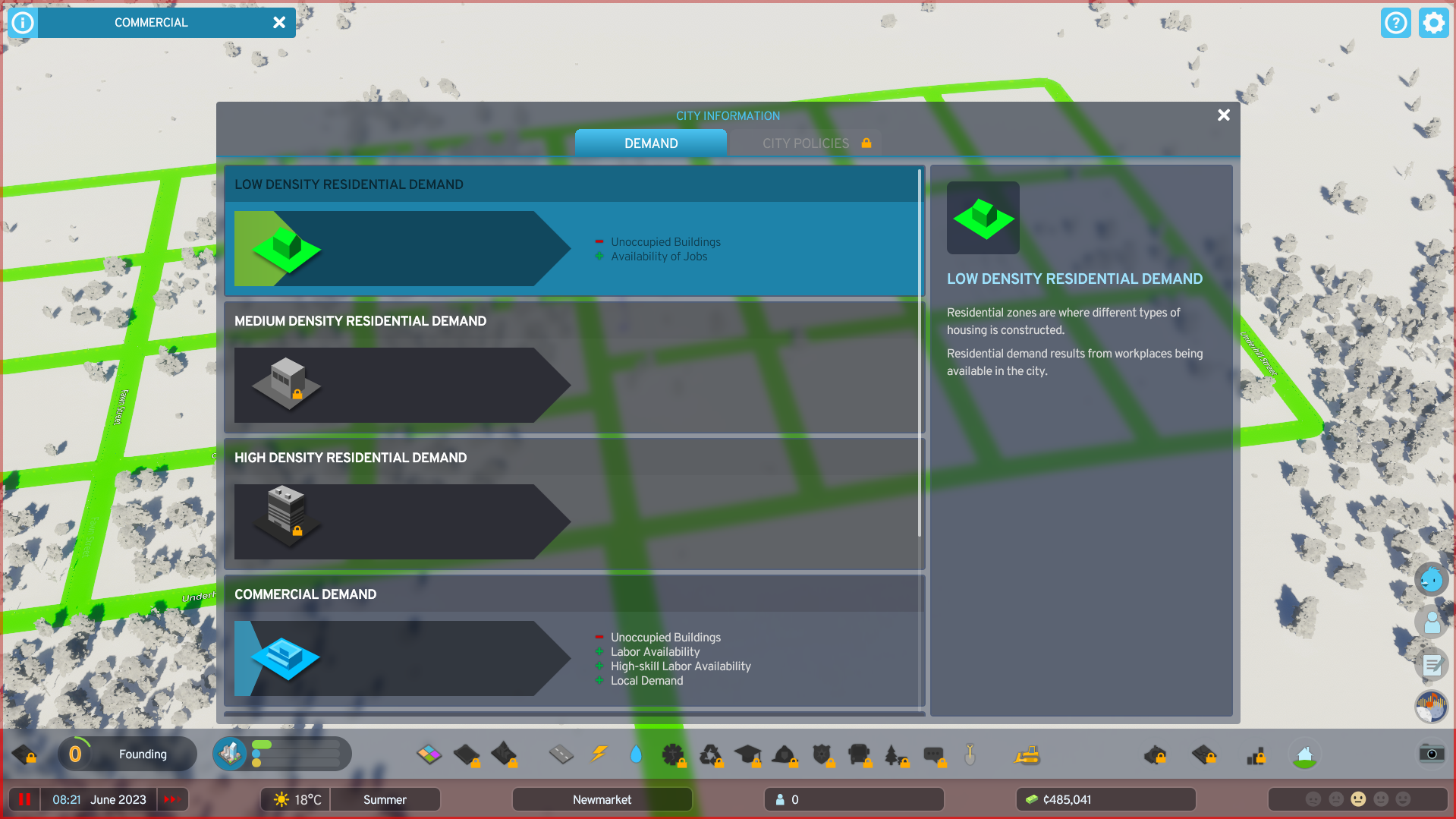Cities: Skylines 2 is the gaming world’s go-to city-building simulation, but it is perhaps too realistic sometimes. The problem of unoccupied housing pervades both the real world and the game, but as opposed to real-life troubles, we have a solution on how to fix unoccupied buildings in Cities: Skylines 2.
The issue can cause significant harm to your city’s development, hindering expansion and impacting you in terms of progression and finances. As you may already know, Cities 1 and 2 can be beset by adverse effects, with unoccupied buildings being among the most head-scratching of all. So, to alleviate your urban planning troubles, let’s look at how to eradicate this annoying problem.
What causes unoccupied buildings in Cities: Skylines 2?
Unoccupied buildings can be produced by one of two factors: you have too many or too few buildings of a particular type. In the case of the former, you’re zoning way ahead of time, producing so many buildings that residents, commercial businesses, and industrial corporations simply have no time to fill all the empty plots prepared for them. This is the natural thing one would think “unoccupied buildings” means, but it isn’t always the case in Cities: Skylines 2.
In the other case, which makes less sense, is that one has too few buildings in their city. You’re not meeting zoning demands; therefore, there are not enough houses, facilities, or commercial buildings to allow interested parties to move in. This causes massively high demand in your city and leads to other issues such as few workers and a shortage of materials, leading to unemployment, businesses closing, etc.
How to fix unoccupied buildings?

First, you’ll need to identify where the issue comes from. If you’re zoning too heavily, you should consider the following:
- Zone less: Plop fewer zones until your demands normalize, or focus on placing zones of types unaffected by the status effect.
- Remove zones: You may also consider removing excess zones, increasing your demand slowly but surely.
- Always follow the demand: Never zone ahead of time. Identify your demand priorities and zone accordingly, which will help you evade this issue altogether.
- Lower rent: Rent is a general issue that can cause residents, businesses, or factories to abandon ship and produce unoccupied buildings.
- Demolish empty buildings: Demolish abandoned facilities and houses rendered vacant. This will lower demand in a similar vein to removing zones.
There are a few other solutions if you have too few buildings of any given type. The priority here should be maximizing how many people move into your town, both citizens and commercial and industrial businesses. You can do this by increasing the attractiveness of your city, and here’s how to do just that:
- Zone more: In contrast to the previous issue, you may want to place more zones. Keep track of the demand so as not to cause your city to build too much.
- Increase land value: By placing down parks and services and upgrading existing buildings, you can increase the land value, attracting more residents who will also pay more rent. Don’t go overboard and cause rent to rise too much, as that’ll make your residents leave.
- Zone mixed use: Zoning mixed-use buildings can significantly improve the flow of traffic and city cohesion. A poorly planned zone placement can lead to massive troubles beyond unoccupied buildings.
- Be mindful of the industry: Separate your industrial zones from the rest, as pollution lowers land value, causes sickness, and forces people to leave. You also don’t want industries to be placed downwind, as pollution can also travel by air and affect your citizens farther away.
Expanding your city is the ultimate goal of Cities: Skylines 2, and just happens to solve the problem of unoccupied buildings as well. Remember that you should always keep track of what’s happening in your city, as general problems may not be the only hindrance you’ll face. The late game especially is troublesome due to the traffic simulation, and we all know what it looks like to have a death wave conquering your city while all the ambulances and hearses are stuck in rush hour.
Watch everything in your city, just as you would if sitting in a government building, and ensure a great and prosperous future for your cims.












Published: Nov 25, 2023 04:26 pm